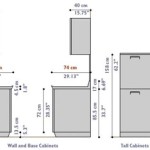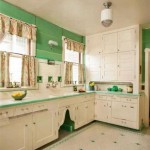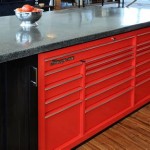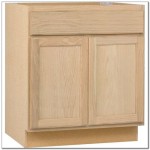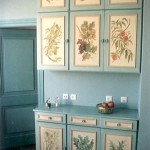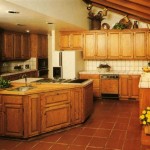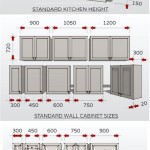Green Kitchen Cabinets With Dark Floors: A Design Exploration
The combination of green kitchen cabinets and dark floors represents a sophisticated and grounding design choice for modern and traditional homes alike. This pairing leverages the natural harmony of color palettes found in landscapes, bringing a sense of tranquility and balance into the heart of the home. The versatility of green, coupled with the anchoring effect of dark floors, allows for a wide range of stylistic interpretations, making it a popular choice for homeowners seeking both aesthetic appeal and practical functionality in their kitchen design.
The success of this design scheme hinges on carefully considering the specific shades of green and the type of dark flooring used. The interplay between light and shadow, texture and material, needs to be meticulously planned to achieve the desired atmosphere. Understanding the nuances of color theory and interior design principles is crucial for maximizing the visual impact of this combination and creating a kitchen that is both beautiful and functional.
Understanding the Appeal of Green Cabinets
Green, in its myriad shades, evokes feelings of nature, growth, and serenity. Its association with the outdoors makes it a welcoming and refreshing color for the kitchen, a space often associated with gathering and nourishment. The psychological impact of green can be calming and grounding, creating a more relaxed environment for cooking and socializing. The color's versatility allows it to be used in various design styles, from rustic farmhouse kitchens to sleek, modern spaces.
The specific shade of green chosen for cabinets can dramatically alter the overall feel of the kitchen. Lighter, more muted greens, such as sage or mint, lend themselves to a softer, more airy aesthetic, ideal for smaller kitchens or those seeking a subtle, understated elegance. These lighter tones reflect more light, making the space appear brighter and more open. In contrast, deeper, richer greens, like emerald or forest green, create a more dramatic and luxurious feel. These darker shades can add depth and sophistication to larger kitchens and pair well with metallic accents and natural stone countertops.
Furthermore, the finish of the green cabinets—matte, glossy, or textured—plays a significant role in the overall aesthetic. Matte finishes tend to absorb light, creating a more subdued and natural look, while glossy finishes reflect light, adding a touch of glamour and modernity. Textured finishes, such as wood grain or raised panels, add visual interest and can complement the overall design style of the kitchen.
The Role of Dark Flooring in Anchoring the Space
Dark flooring choices provide a strong visual anchor for a kitchen, grounding the space and creating a sense of stability. The contrast between dark floors and lighter-colored cabinets, such as green, enhances the visual definition and prevents the room from feeling too light or ethereal. Dark floors also contribute to a sense of sophistication and elegance, adding a touch of luxury to the overall design.
The choice of material for dark flooring is crucial in terms of both aesthetics and functionality. Hardwood floors, stained in dark browns or blacks, offer a classic and timeless appeal. They are durable and relatively easy to maintain, although they are susceptible to scratches and water damage. Stone flooring, such as slate or dark granite, provides a more rustic and textured look, adding a natural element to the kitchen. These materials are highly durable and resistant to stains and scratches, but they can be more expensive and require specialized installation.
Alternative flooring options include dark tiles, laminate, and vinyl. Dark tiles offer a wide range of design possibilities, from sleek and modern to more traditional and patterned. Laminate flooring provides a cost-effective alternative to hardwood, offering a similar aesthetic with greater resistance to scratches and water damage. Vinyl flooring is another budget-friendly option that is highly durable, water-resistant, and easy to clean, making it a practical choice for busy kitchens.
Achieving Harmony: Considerations for Design and Implementation
Successfully integrating green cabinets with dark floors involves careful consideration of several key design elements. The color palette, lighting, hardware, countertops, and backsplash all contribute to the overall aesthetic and functionality of the kitchen. A cohesive design plan is essential for achieving a harmonious and balanced space.
When selecting a color palette, it is important to consider the undertones of both the green cabinets and the dark floors. Warm greens, with yellow undertones, pair well with warm-toned dark floors, such as dark brown hardwood. Cool greens, with blue undertones, complement cool-toned dark floors, such as dark gray slate. Accents of white, cream, or gray can be used to lighten the space and create contrast. Metallic accents, such as gold, silver, or bronze, can add a touch of elegance and sophistication.
Lighting plays a crucial role in highlighting the beauty of the cabinets and floors. Natural light should be maximized whenever possible. Supplemental lighting, such as recessed lighting, pendant lights, and under-cabinet lighting, should be strategically placed to illuminate work areas and create a warm and inviting atmosphere. The color temperature of the lighting should also be considered. Warm lighting creates a cozy and inviting feel, while cool lighting provides a brighter and more modern look.
Hardware choices, such as cabinet knobs and pulls, should complement the overall design style. Simple, minimalist hardware works well with modern kitchens, while more ornate hardware adds a touch of elegance to traditional kitchens. The finish of the hardware should also be considered. Brushed nickel, stainless steel, and oil-rubbed bronze are popular choices that complement a variety of cabinet and flooring colors.
Countertop selection is another important factor. Light-colored countertops, such as white quartz or granite, provide a striking contrast to the dark floors and green cabinets, creating a bright and airy feel. Dark-colored countertops, such as black granite or soapstone, create a more dramatic and luxurious look. The material and finish of the countertops should also be considered. Quartz countertops are durable and easy to maintain, while granite countertops offer a unique and natural aesthetic.
The backsplash provides an opportunity to add visual interest and texture to the kitchen. Subway tiles, glass tiles, and mosaic tiles are popular choices. The color and pattern of the backsplash should complement the cabinets, floors, and countertops. A neutral-colored backsplash allows the cabinets and floors to be the focal points of the design, while a bold-colored or patterned backsplash adds a pop of personality.
Ultimately, the successful integration of green kitchen cabinets with dark floors requires careful planning and attention to detail. By considering the nuances of color, texture, lighting, and hardware, homeowners can create a kitchen that is both beautiful and functional, reflecting their personal style and enhancing the overall appeal of their home.
The specific shade of green chosen for the cabinets should also complement the existing architectural elements of the kitchen, such as the trim, molding, and windows. A cohesive design plan ensures that all elements of the kitchen work together harmoniously to create a visually appealing and functional space.
Furthermore, the size and layout of the kitchen should be taken into account when selecting green cabinets and dark floors. In smaller kitchens, lighter shades of green and strategically placed lighting can help to create the illusion of more space. In larger kitchens, bolder shades of green and more dramatic lighting can be used to create a more luxurious and impactful design.
The choice of appliances can also influence the overall aesthetic of the kitchen. Stainless steel appliances are a popular choice that complements a variety of cabinet and flooring colors. Black appliances create a more sophisticated and modern look, while white appliances offer a clean and classic aesthetic.
Finally, personal preferences and lifestyle should be the guiding factors in the design process. The kitchen should be a space that reflects the homeowner's individual style and meets their specific needs and requirements. By carefully considering all of these factors, homeowners can create a kitchen that is both beautiful and functional, enhancing their daily lives and adding value to their home.

9 Green Kitchens That Are Positively On Trend Hunker Kitchen Design Trends Modern Layout

The Best Dark Green Kitchens Like Ever Jessica Brigham

Kitchen Colorful Cabinets Dark Hardwood Floors Design Photos And Ideas Dwell

Kitchen Colorful Cabinets Dark Hardwood Floors Design Photos And Ideas Dwell

Dark Green Kitchens

Casual Deep Green And Brown Kitchen Cabinets Designs Dark

Dark Green Kitchen Color Schemes

After Remodeling Photos Nottingham Yoder Remodels

10 Inspiring Dark Green Kitchens Smartly Artfully

Green Kitchen Ideas Oppolia
Related Posts

